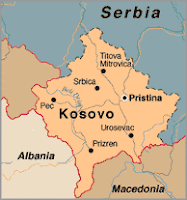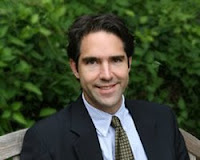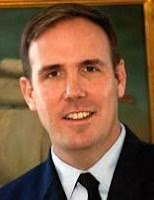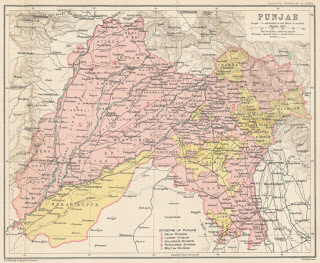 We’re thick into the Obama confirmation season and some of the commentary has moved from the surreal to the preposterous, with Fox News leading the charge (followed closely by the right-wing blogosphere). The current Obama nomination target seems to be Harold Hongju Koh, the Dean of the Yale Law School (disclosure: my alma mater), who has been nominated to serve as Legal Advisor to the U.S. State Department. Harold Koh previously served with distinction as Assistant Secretary of State for Democracy, Human Rights, & Labor under President Clinton.
We’re thick into the Obama confirmation season and some of the commentary has moved from the surreal to the preposterous, with Fox News leading the charge (followed closely by the right-wing blogosphere). The current Obama nomination target seems to be Harold Hongju Koh, the Dean of the Yale Law School (disclosure: my alma mater), who has been nominated to serve as Legal Advisor to the U.S. State Department. Harold Koh previously served with distinction as Assistant Secretary of State for Democracy, Human Rights, & Labor under President Clinton.In addition to the complaint that a top appointment to the State Department--the United States’ interface with the world--might be a “transnationalist”, i.e. someone who thinks international law matters (the absurdity of this critique has been discussed here [IntLawGrrls] and here [Concurring Opinions] and here [Opinio Juris]), there are several manufactured nomination “controversies” that might be of particular interest to IntLawGrrls:
- that Koh believes sharia law should apply within U.S. courts;
- that he believes we should not let a treaty dictate whether we can execute juveniles convicted of crimes;
- that he once called President Bush the "torturer-in-chief"; and
- my personal favorite: that we should abolish Mother’s Day.
The alleged sharia law comment is elusive. Apparently, someone recalled Koh indicating in a public talk that sharia law might apply within U.S. courts. Others who attended that talk have no memory of the comment, recalling only that Koh spoke of how different legal systems, including sharia, share common legal concepts and principles. Hardly a controversial observation.
If anyone still have doubts about his position on sharia, s/he should take a look at an account of
 an exchange between then Professor Koh and Sayed Rahmatullah Hashmi (right), once the envoy to the Taliban when it ruled Afghanistan, and implemented its version of sharia law, who had been admitted to Yale University as a non-degree student. Prof. Koh participated in a debate entitled "The Taliban: Pros and Cons" arranged by the University. His role was to present the "con" side at the request of Prof. Gustav Ranis, then at the Yale Center for International and Area Studies. Prof. Koh publicly challenged several policies of the Taliban that marginalized and harmed women, such as the inability of women to receive medical care or to walk freely within society. Rahmatullah retorted that his wife and daughter can do those things, implying that Prof. Koh was "misguided" about Taliban policies. Rahmatullah, of course, failed to see the hypocrisy in his comments: his wife and daughter—women of obvious privilege—could enjoy such normalcies while the majority of Afghan women would risk being stoned for doing so.
an exchange between then Professor Koh and Sayed Rahmatullah Hashmi (right), once the envoy to the Taliban when it ruled Afghanistan, and implemented its version of sharia law, who had been admitted to Yale University as a non-degree student. Prof. Koh participated in a debate entitled "The Taliban: Pros and Cons" arranged by the University. His role was to present the "con" side at the request of Prof. Gustav Ranis, then at the Yale Center for International and Area Studies. Prof. Koh publicly challenged several policies of the Taliban that marginalized and harmed women, such as the inability of women to receive medical care or to walk freely within society. Rahmatullah retorted that his wife and daughter can do those things, implying that Prof. Koh was "misguided" about Taliban policies. Rahmatullah, of course, failed to see the hypocrisy in his comments: his wife and daughter—women of obvious privilege—could enjoy such normalcies while the majority of Afghan women would risk being stoned for doing so.The juvenile death penalty allegation comes from an article by Meghan Clyne in the New York Post, which claims that Koh believes that the Convention on the Rights of the Child (CRC) (a treaty ratified by almost all the states of the world except the United States and Somalia) should dictate the age at which individuals can be executed. It is true that the CRC at Article 37(a) requires that states parties ensure that:
No child shall be subjected to torture or other cruel, inhuman or degrading treatment or punishment. Neither capital punishment nor life imprisonment without possibility of release shall be imposed for offences committed by persons below eighteen years of age.
Clyne apparently missed that the issue has already been decided—by the U.S. Supreme Court. In Roper v. Simmons (2005), the Court held that the Eighth and Fourteenth Amendments of the U.S. Constitution forbid the execution of offenders who were under the age of 18 when their crimes were committed. In so ruling, the Court found a national consensus against the practice in light of
- the rejection of the juvenile death penalty in the majority of U.S. states (and its rare use even where it remained on the books) and
- the consistent trend toward its abolition.
It is proper that we acknowledge the overwhelming weight of international opinion against the juvenile death penalty, resting in large part on the understanding that the instability and emotional imbalance of young people may often be a factor in the crime. … The opinion of the world community, while not controlling our outcome, does provide respected and significant confirmation for our own conclusions.
The third claim about the “torturer-in-chief” comment seems to come from a misreading (or failure to read) an article by Koh in the Indiana Law Journal in which Koh addressed the question of whether, as a legal matter, the Office of the President could constitutionally order torture. His answer was “no”:
Competing schools of constitutional interpretation all accept that the Constitution does not authorize the President to be Torturer-in-Chief. . . . [W]hen the commander in chief becomes torturer in chief, his orders have crossed the line from legal to illegal conduct. ... The President cannot, on his own constitutional authority, authorize violations of jus cogens [non-derogable] norms. ... And even in the gravest national circumstances, the Constitution does not preauthorize the President, his subordinates, or anyone else, to torture someone in U.S. custody using either a rationale of self-defense or a defense of necessity.
This position has been echoed by many others in the beltway and academia, including President Bush himself, who said as such in a 2006 interview with Bob Schieffer (CBS News):
SCHIEFFER: … [T]he question I have, Mr. President, is: Do you believe that there is anything that a president cannot do, if he considers it necessary, in an emergency like this?
PRESIDENT BUSH: That's a--that's a great question. You know, one of the--yeah, I don't think a president can tort--get--can order torture, for example. I don't think a president can order the assassination of a leader of another country with which we're not at war. Yes, there are clear red lines …
Finally, Mother’s Day. Koh — among many others — has advocated that the United States  consider joining the Convention on the Elimination of Discrimination Against Women (CEDAW) —a treaty that most of the world, save the United States and a handful of Middle Eastern and African states, has ratified. Koh was invited to discuss this issue before the Senate Foreign Relations Committee and also put forth his position in the Case Western Law Review (2002). A footnote from this article seems to be the source of the bizarre claim.
consider joining the Convention on the Elimination of Discrimination Against Women (CEDAW) —a treaty that most of the world, save the United States and a handful of Middle Eastern and African states, has ratified. Koh was invited to discuss this issue before the Senate Foreign Relations Committee and also put forth his position in the Case Western Law Review (2002). A footnote from this article seems to be the source of the bizarre claim.
Koh, in debunking several misconceptions about CEDAW, wrote at note 51 that:
One such preposterous claim, for example, is that U.S. ratification of the CEDAW would somehow require the United States to abolish Mother’s Day. This claim twists a statement in the CEDAW Committee’s report on Belarus, which spoke negatively about a Belarusian holiday that discouraged women from working in the marketplace, by celebrating and encouraging only those mothers who work in the home. Rather than denigrating motherhood, the CEDAW’s central aim is to support motherhood, by promoting women’s freedom to make choices on an equal basis with men. Nothing in that goal conflicts with the American tradition of celebrating both Mother’s Day and Father’s Day every year, as expressions of this country’s commitment to full gender equality, consistent with the nondiscrimination goals of the CEDAW.
As someone who regularly enjoys breakfast in bed on Mother's Day, I say "here, here."
I have little doubt that those involved in the confirmation process will be able to separate out fact from fallacy and confirm Harold Koh as Legal Advisor to the State Department.
As the Acting Deputy Spokesperson for the State Department stated on the record to Fox:
Dean Koh is universally respected for his legal scholarship, and previously served as an Assistant Secretary of State - and was praised for his work by Republicans and Democrats alike. President Obama and Secretary Clinton strongly believe he's the right person for the job.
Koh has also received kudos from former Bush Administration Solicitor General Ted Olson. More on the Harold Koh nomination and the over-zealous right-wing attack on Koh is available here.














 Bobby Chesney
Bobby Chesney














-2.jpg)










